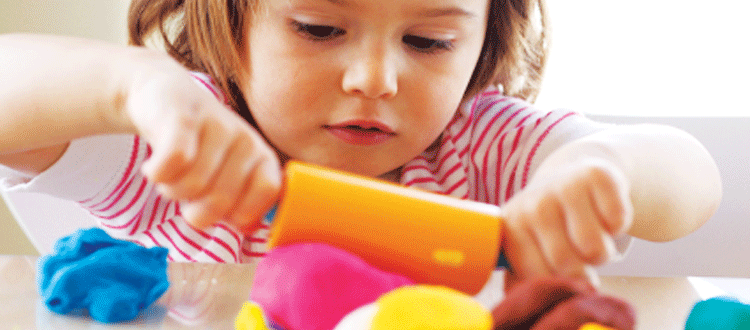The Information New Moms Need
 |
|
Erin Switalski Executive Director |
More than 160 women are hosting Green Momma Parties this May to call on Congress to protect us from toxic chemicals – join them!
When I got pregnant, it wasn’t news to me that I should be extra careful in avoiding toxic chemicals. I knew I shouldn’t eat tuna due to high mercury levels and that I shouldn’t paint the nursery because of volatile organic compounds (VOCs) in the paint. But I started wondering about the lesser-known exposures out there and how they might impact my growing little girl. And so began my obsessive Internet searches and endless digging, only to find that the answers weren’t cut and dry. In fact, what I hoped would be an enlightening experience left me feeling pretty hopeless.
Depending on how you look at it, I had the advantage (or misfortune) of knowing quite a bit about toxic exposures before I got pregnant because I lead a nonprofit called Women’s Voices for the Earth. For nearly two decades, WVE has pushed lawmakers to develop safer chemical policies, campaigned for corporations to use safer ingredients, and educated women about the impact of certain chemicals on their health.
So, I already knew that an estimated 80,000 – 85,000 chemicals are in use in the United States, but that only about 200 of these chemicals have been tested for safety. I knew that the cost to women’s health in particular has been enormous. For example, over the last three decades, breast cancer rates have risen from a lifetime risk of 1 in 20 to 1 in 8[1]. Young girls today begin menstruating several months earlier than they did 40 years ago and developing breasts up to one to two years earlier[2]. Endometriosis, a leading cause of female infertility and currently diagnosed in 10-20 percent of American women of reproductive age, is far more common now than 50 years ago[3]. And the research shows that toxic chemicals found in our everyday products are playing a role.
One of the scariest things for me was knowing that the chemicals stored in a woman’s body over her lifetime are passed onto her child during pregnancy and later through breast-feeding. A 2005 study by the Environmental Working Group revealed that at least 287 hazardous industrial chemicals pass through the placenta to the fetus[4]. These chemicals also contaminate the breast milk. Even so, the benefits of breastfeeding far outweigh this risk, so I chose to breastfeed.
A woman’s body really is the first environment for the next generation, so I feel a responsibility to keep that environment clean and healthy. When I got pregnant, my already deep commitment to women’s health became a deep and personal urgency to avoid toxic chemicals in my own life – to the extent it was possible. Ultimately, I knew I had to keep pushing for policies that will ensure all everyday products are safe. But in the meantime, I needed answers right now, so that I could make a difference in my little girl’s life.
And so the Green Momma Party Guide was born. This guide provides information about toxic hazards in the home and practical tips for avoiding them. And best of all, it involves a party with other new moms!
New moms need each other. We need to talk about the overwhelming sleep deprivation, which car seat we bought, our little one’s bowel movements, the challenges of breastfeeding if we choose that, pacifiers and nipple confusion, and a whole host of topics that I previously had never spent even five minutes thinking about. We do this because becoming a mom can be isolating and overwhelming, and talking with others who “get it” is just the medicine we need.
This premise – that moms meet to talk and learn together – is the foundation for the Green Momma Party. Together, we learn what toxic chemicals we should know about, where they might be lurking, and how to find safe alternatives. All of this great info is contained in an easy to read booklet to guide the party hostess and her guests through easy and effective ways to detox your home, either before baby arrives or after. It includes five DIY recipes as well, for making your own easy (and cheap!) diaper wipes, bug repellant, laundry detergent, face scrub, and baby food. And if you don’t have time to make your own products, there’s a safe shopping guide to find healthy products in the marketplace.
It’s true that our nation’s toxic chemical crisis won’t be fixed without policy-level solutions. But as a new mom, I can’t wait on Congress. I want to do everything in my power to find immediate solutions that result in a safer home environment for my baby girl while I keep plugging away for the long-term changes we need.
I invite other new moms who feel this sense of urgency to join me. Have a party today. Then fight on with me tomorrow.
Some tips from our Green Momma Party Guide:
- When choosing plastics, those with the recycle numbers 4 and 5 are the best choices. Avoid #3 – it signifies PVC, also known as the “poison plastic.”
- Avoid canned food, which is often lined with plastic containing bisphenol-A (BPA). Opt for fresh or frozen food, or food stored in glass containers instead.
- Avoid antibacterial soaps with Triclosan – you will see this chemical listed on the label. Most of the time, castile soap and water will do the job.
- Instead of bleach, add hydrogen peroxide to your wash to whiten the clothes.
[1] Breast Cancer Fund. 2008. State of the Evidence: The Connection Between Breast Cancer and the Environment, fifth edition. Available: http://www.breastcancerfund.org/publications
[2] Steingraber, S. 2007. The Falling Age of Puberty. The Breast Cancer Fund. Available: http://www.www.breastcancerfund.org/puberty
[3] Program on Reproductive Health and the Environment at University of California, San Francisco.2008.Shaping our Legacy: Reproductive Health and the Environment. Report on Summit on Environmental Challenges to Reproductive Health and Fertility. 2008 Sep; 1-80.
[4] Environmental Working Group (EWG). 2005. Body Burden 2: The Pollution in Newborns. Available: http://archive.ewg.org/reports/bodyburden2/



